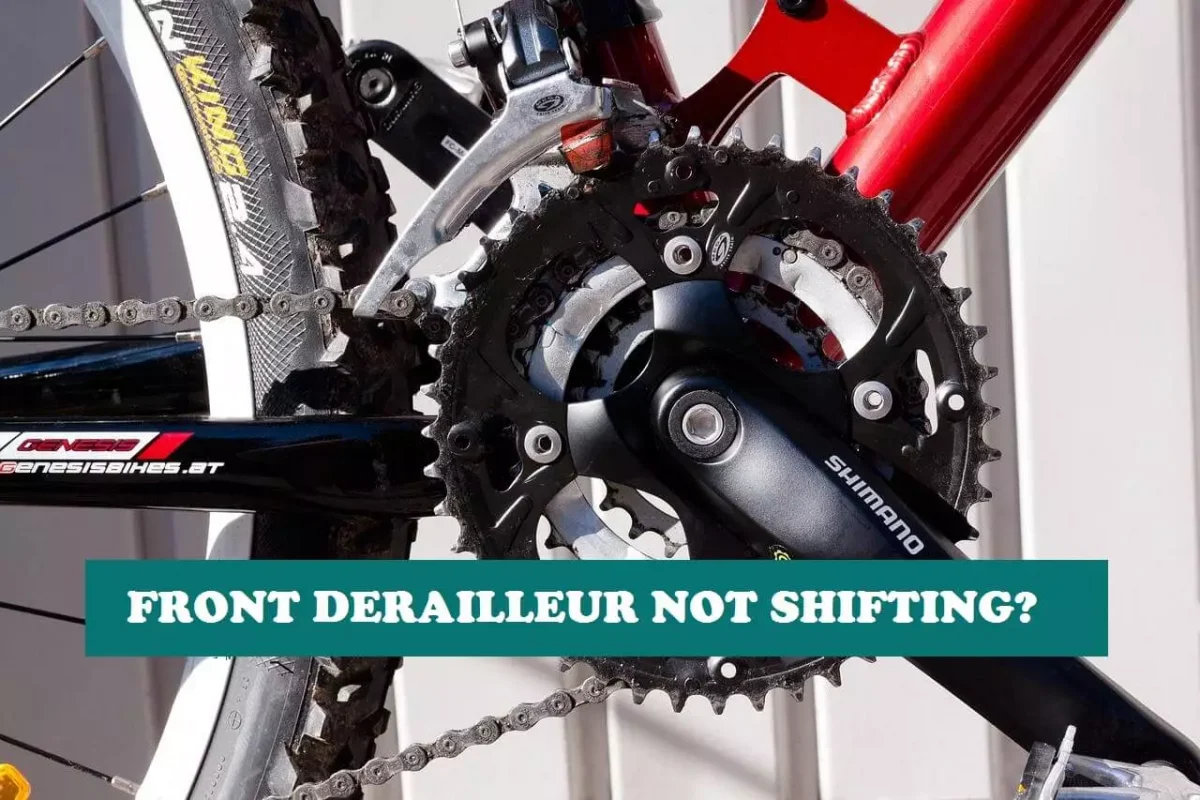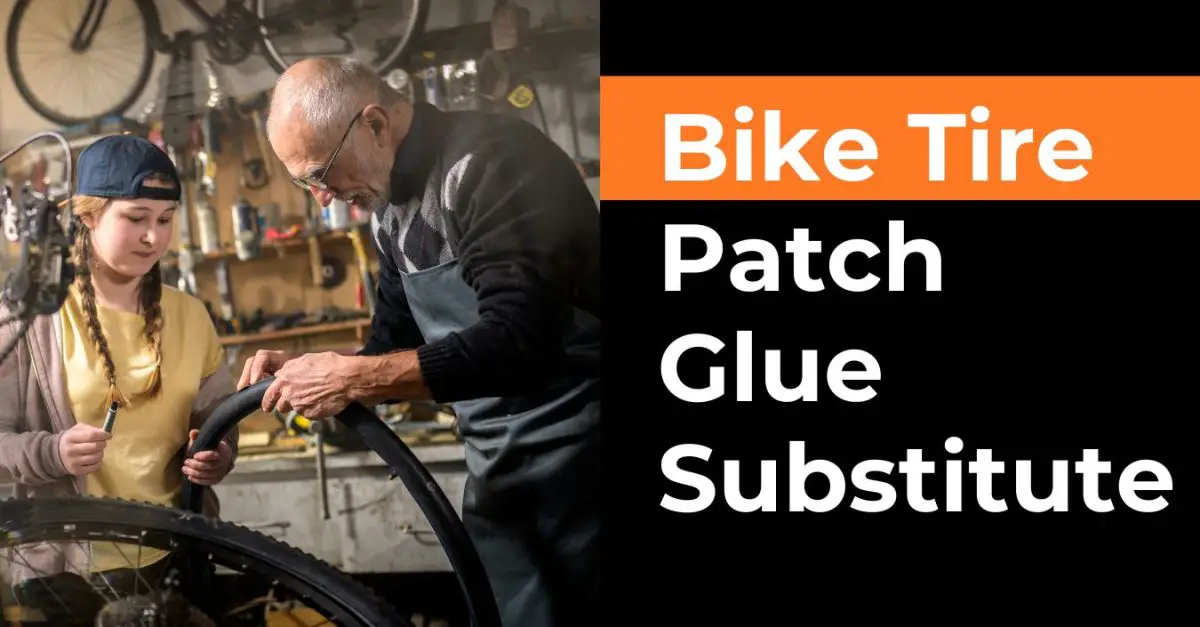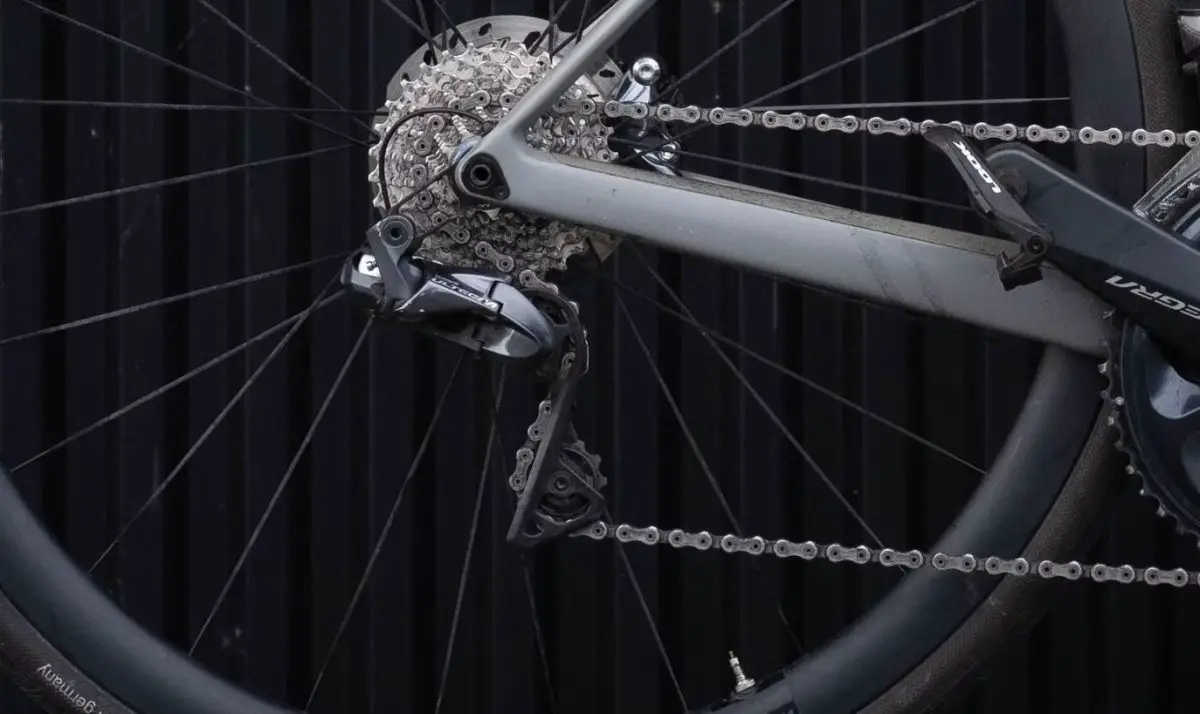· Daniel · Repairs · 5 min read
Front Derailleur Not Shifting?
If you're a cyclist and have been riding for a long time, you've probably experienced your front derailleur not shifting at least once right? It's SUPER annoying.

If you’re a cyclist and have been riding for a long time, you’ve probably experienced your front derailleur not shifting at least once right? It’s SUPER annoying.
You’ve just cleaned your bike, adjusted the gears, and greased the chain, but your front derailleur STILL won’t shift.
But there are a few things you can try before taking your bike to the shop. We’ll explain why your front derailleur isn’t shifting and what you can do to fix it in this post.
Also read Can I Ride A Bike With A Torn Hip Labrum
Why Is My Front Derailleur Not Shifting?
If your front derailleur isn’t shifting properly, there are a few things you may do to figure out what’s wrong.
To begin, ensure that the chain is properly positioned on the derailleur. Shifting issues might occur if the chain is placed improperly. Next, make sure the derailleur’s limit screws are correctly set.
Limit screws are intended to prevent the chain from over-shifting, hence the wrong adjustment might create shifting issues. Finally, inspect the tension of the wire that connects the shifter to the derailleur.
When the cable is too loose, the chain might slip. If you’ve checked all of these items and your front derailleur is still not shifting correctly, it’s time to take it to a bike shop and get it looked at by an expert.
Also read Thumb Shifters On Drop Bars
How to Fix a Front Derailleur Not Shifting?
Fixing a front derailleur that is not shifting is not a difficult job. Here are a few ways to fix a front derailleur, if:
1. The Derailleur Body Is Not Correctly Positioned
Adjusting the Front Derailleur is the best remedy if your derailleur is not properly positioned. The “cage” through which the chain travels should be roughly 2 mm above the chainring’s teeth (when viewed from the side).
When viewed from below, the cage’s outer plate should be parallel to the chain ring. If you discover that your derailleur cage is twisted or damaged in any way during this operation, bring it to your local REI or another bike shop for servicing.
2. The Derailleur Limit Screws Are Not Properly Set
Limit screws regulate the inner and outer borders of your derailleur arm’s side-to-side movement. A crash might occur if the screws are not appropriately adjusted.
Only move the screws clockwise if your chain is bouncing off either end of your chainrings or outer cassette.
*WARNING: This basic guide for changing limit screws is meant primarily for experienced riders with extensive mechanical abilities. Before you can release the tension in the cable, you must first change the front derailleur to the innermost chainring.*
Next, move your chain to the farthest inside position: the smallest chainring and the largest rear cog. Position the inner wall of the front cage with your inner limit screw.
Position the inner wall of the front cage with your inner limit screw such that there is 2mm of clearance between it and your chain at the place where they come closest together.
3. The Mechanism Is Soiled
Most contemporary bicycles have barrel adjusters incorporated into their derailleur systems for fine-tuning. Barrel adjusters are more commonly employed to fine-tune the position of the rear derailleurs than the front.
When you need to shift the cage inward away from the chain, crank the adjustment clockwise slightly to release cable strain. If the problem is because your machine is clogged, this is the best option.
If none of these work, take your bicycle to a bicycle repair or service shop for a proper examination.
4. The Cable Is Damaged or Not Correctly Tensioned
Even minor quantities of grit and dirt can create issues, so maintain your derailleurs clean at all times.
Re-lubricate them every a month or so (depending on riding circumstances) to maintain them in good working order.

Use bike-specific drip lubrication and be sure to twist the derailleur back and forth while applying it.
Also read Crown Race Wont Fit On Fork
Can You Ride a Bike Without a Front Derailleur?
Front derailleurs are largely obsolete these days, at least on mountain bikes. Even high-end road bikes are losing their front derailleurs.
With a bigger rear cassette, the same number of gears may be obtained without the use of a front derailleur. As a result, the notion that a lack of derailleur equals reduced range is no longer true.
Shimano’s 1X11 and 1X12 drivetrains, effectively eliminated the necessity for a front derailleur in mountain riding.
A bigger front chainring aids climbing, which is frequently done via the front derailleur.
Also read Topeak Bikamper Alternatives
Conclusion
Front derailleurs can cause sluggish or incorrect shifting if the derailleur body is not properly positioned, the limit screws are not properly set, the mechanism is unclear, or the cable is broken or inadequately tensioned.
The derailleur case swings back and forth, delivering your chain from chainring to chainring. For it to perform properly, it must move from side to side within a very narrow range. Even small amounts of grit and grime can cause problems so keep your derailleurs clean at all times!



